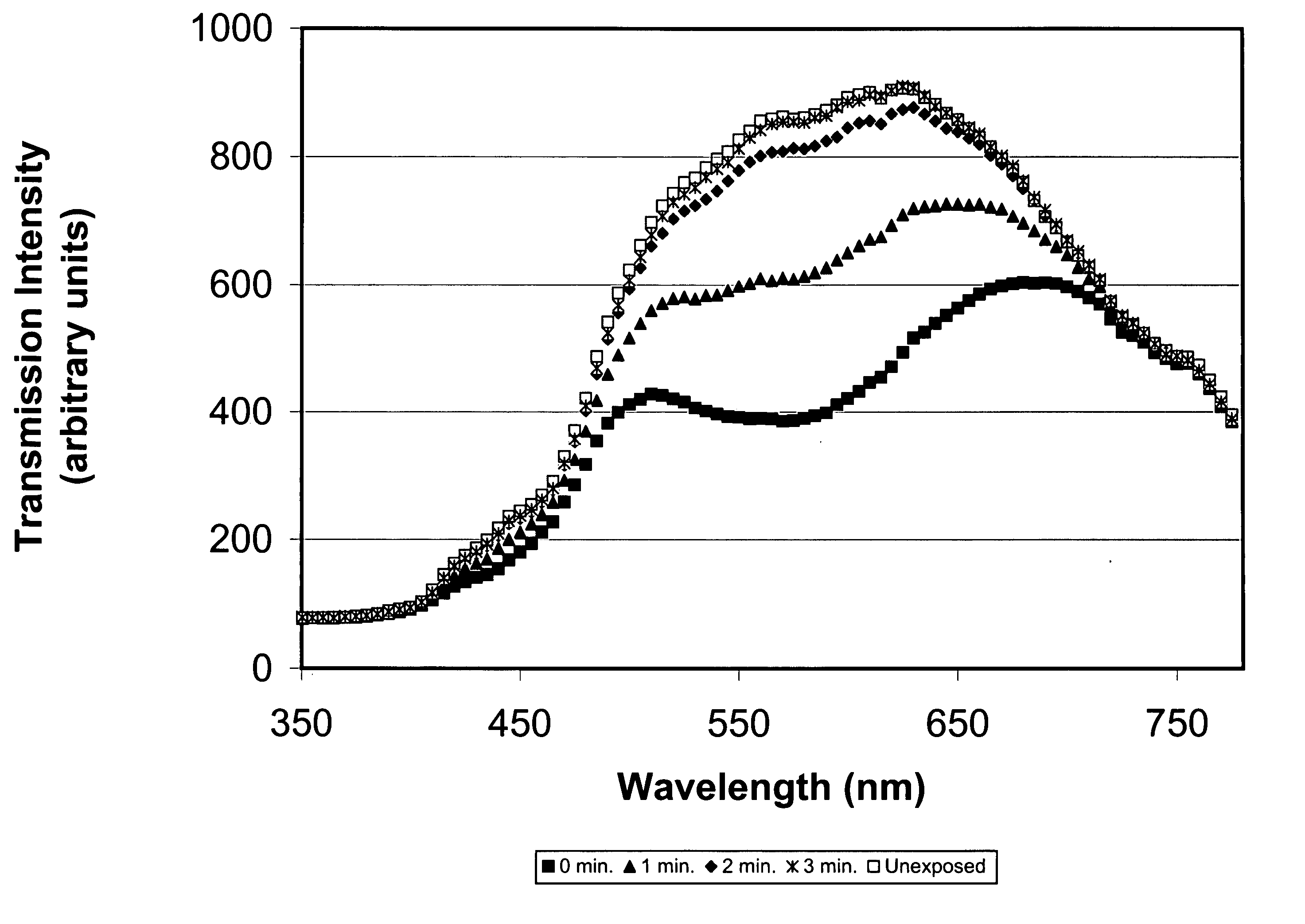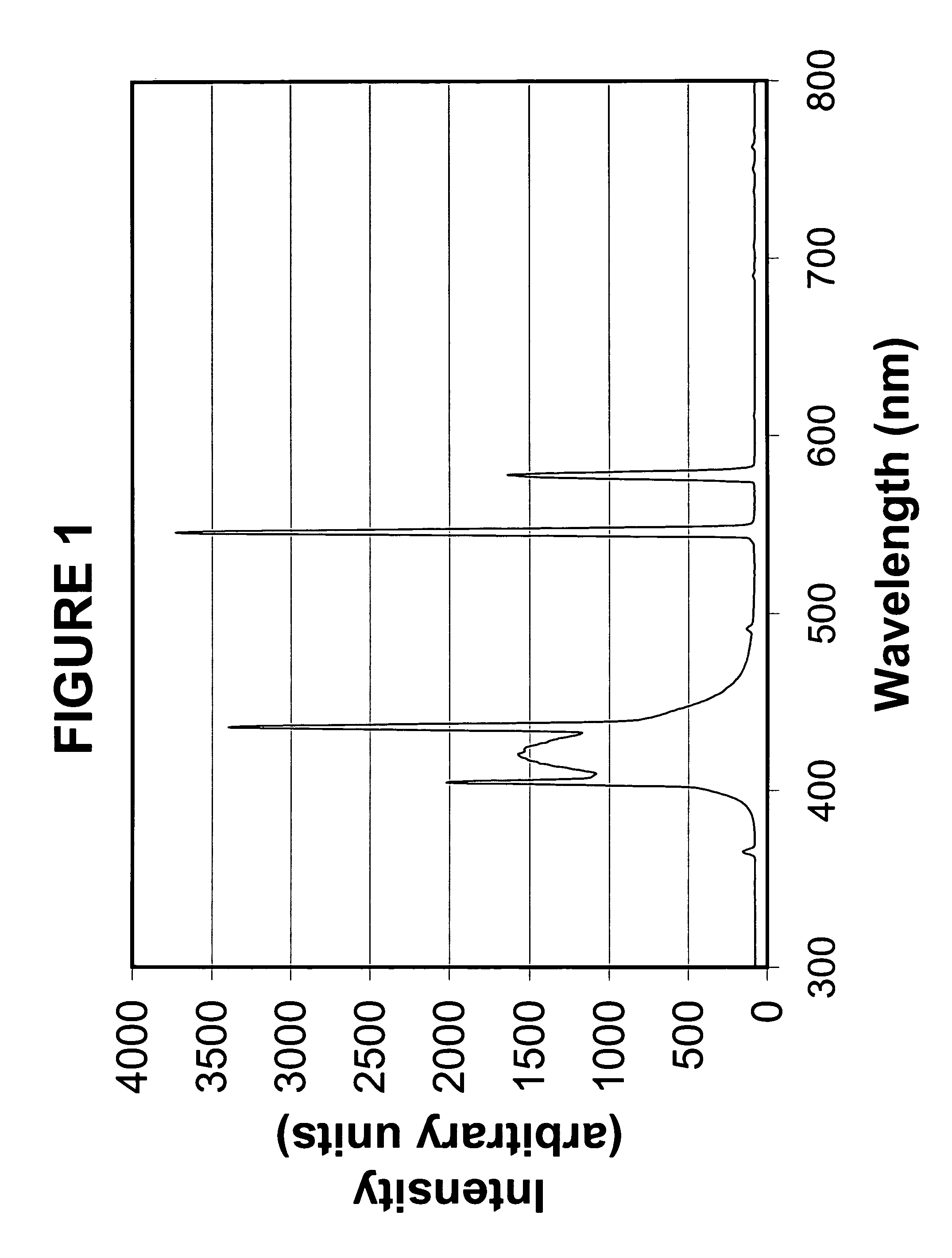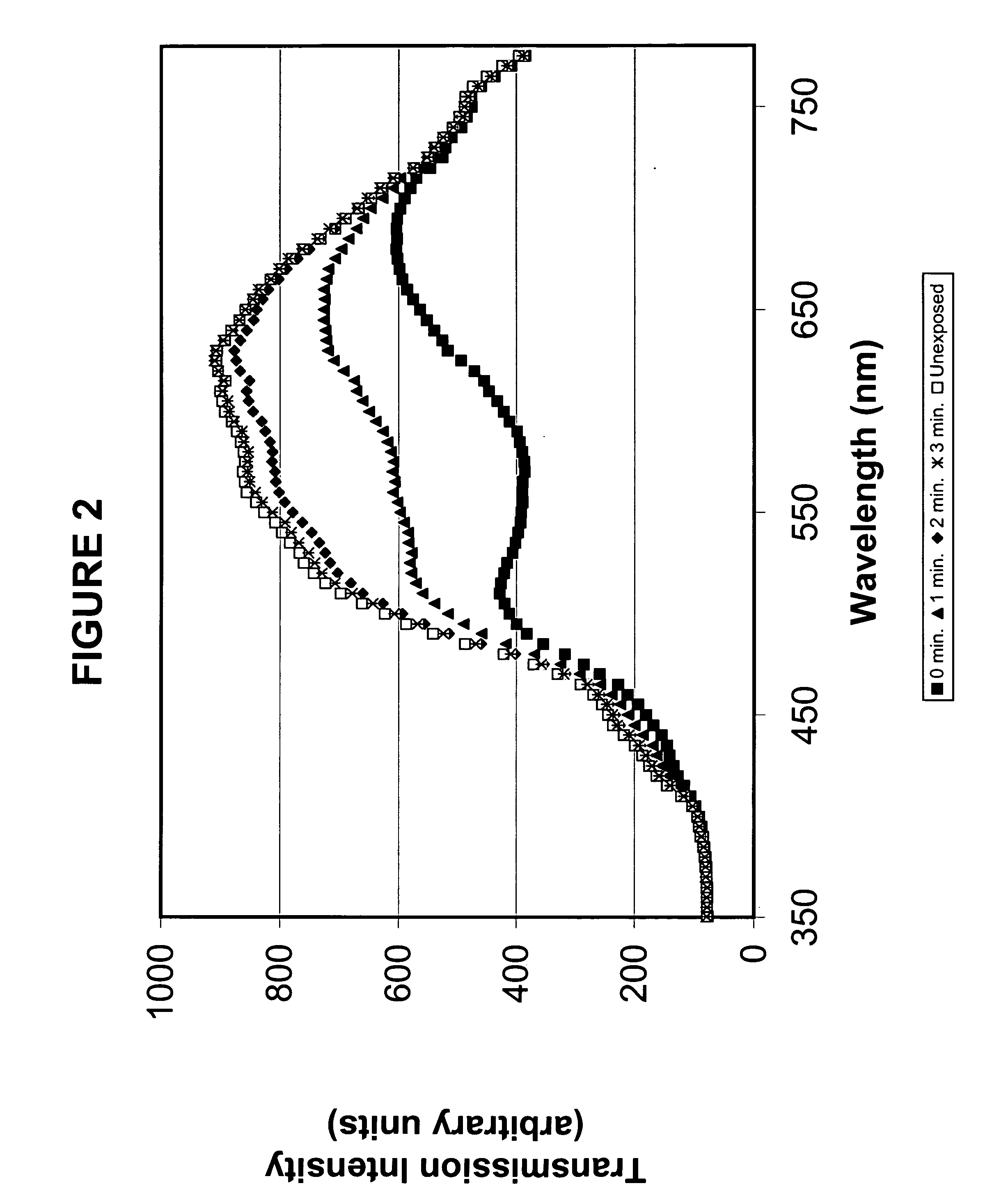Photochromic blue light filtering materials and ophthalmic devices
a filtering material and blue light technology, applied in the field of photochromic blue light filtering materials and ophthalmic devices, can solve the problems of increasing postoperative incidence, ionizing electromagnetic radiation is potentially harmful to the structural components of the eye, and less popularization of more rigid iol implants in the market, and achieves high refractive index and elongation.
- Summary
- Abstract
- Description
- Claims
- Application Information
AI Technical Summary
Benefits of technology
Problems solved by technology
Method used
Image
Examples
example 1
Synthesis of 3-Phenylpropyl Acrylate (PPA)
[0038] In a two-liter amber colored round bottom flask equipped with a mechanical stirrer, dropping funnel, thermometer, condenser, and nitrogen blanket were placed 50 g (0.37 mole) of 3-phenylpropanol, 41.5 g (0.41 mole) of triethylamine and 100 ml of ethyl acetate. The above was cooled to less than 0° C. The reaction was allowed to come to room temperature and stirred under nitrogen overnight. The following morning the organic layer was washed two times with 1 N HCl, one time with brine, and two times with 5% NaHCO3. The organic layer was dried over MgSO4, filtered and rotoevaporated to an oil, and passed through 200 g of silica gel eluting with 70 / 30 heptane / dichloromethane. After solvent removal, 48 g of 97% pure, by gas chromatograph, product resulted. The described synthesis of PPA is further illustrated in Scheme 1 below.
example 2
Film Preparation of Photochromic High Refractive Index Hydrophobic Acrylic Composition
[0039] To 65 parts of PPA prepared in Example 1 were added 35 parts of dimethylacrylamide, 20 parts of methyl methacrylate, 3 parts of ethylene glycol dimethacrylate, 0.5% Vazo® 64 (2,2′-azobisisobutyronitrile, available from DuPont Chemical, Wilmington, Del.) as the thermal polymerization initiator, and 0.5 mg / ml of a naphthopyran having a methacrylate reactive functional group. The clear solution was sandwiched between two silanized glass plates using metal gaskets and polymerized by heating at 60° C. for about 1 hour, 80° C. for about 1 hour, and 100° C. for about 1 hour. The resultant films were released and extracted in isopropanol (IPA) for four hours, followed by air-drying and a 30 mm vacuum to remove the IPA. The films were hydrated at room temperature overnight in borate buffered saline. The clear tack-free films possessed a modulus of 63 g / mm2, a tear strength of 18 g / mm, a water conten...
example 3
Synthesis of Methacryloyloxypropyl, 3,3-dimethyl-1,1,1-(triphenyl)disiloxane (MPTDS)
[0040] To a 1000 ml one-neck round bottom flask fitted with a magnetic stirrer, condenser, heating mantle and nitrogen blanket, are added 500 ml CHCl3, 18.2 grams (149 mmole) of dimethylaminopyridine (DMAP), 37.6 grams (135.9 mmole) of triphenylsilanol and 30.0 grams (135.9 mmole) of 3-methacryloyloxypropyldimethylchlorosilane. The contents of the flask are refluxed for 72 hours and then allowed to cool to room temperature. The organics are washed twice in 500 ml 2N HCl, then dried over magnesium sulfate and flashed to an oil. After column chromatography on silica gel eluting with 80% heptane and 20% CH2Cl2, the product is isolated. The chromatography is monitored by thin layer chromatography (TLC) plates. The described synthesis of MPTDS is further illustrated in Scheme 2 below.
PUM
| Property | Measurement | Unit |
|---|---|---|
| wavelengths | aaaaa | aaaaa |
| wavelength | aaaaa | aaaaa |
| wavelength | aaaaa | aaaaa |
Abstract
Description
Claims
Application Information
 Login to View More
Login to View More - R&D
- Intellectual Property
- Life Sciences
- Materials
- Tech Scout
- Unparalleled Data Quality
- Higher Quality Content
- 60% Fewer Hallucinations
Browse by: Latest US Patents, China's latest patents, Technical Efficacy Thesaurus, Application Domain, Technology Topic, Popular Technical Reports.
© 2025 PatSnap. All rights reserved.Legal|Privacy policy|Modern Slavery Act Transparency Statement|Sitemap|About US| Contact US: help@patsnap.com



